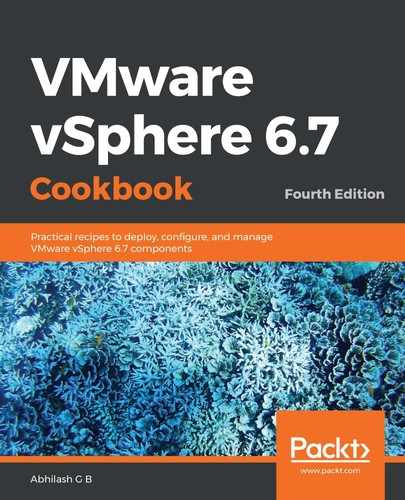Virtual switches (vSS/vDS) include a traffic shaper that enables control of network transfer rates. The only difference is that the traffic shaper on the vSS can only handle the egress traffic, though the vSphere Distributed Switch can handle both ingress and egress.
Anything that leaves a virtual switch (vSS or vDS) is Egress Traffic, and anything that enters a virtual switch (vSwitch or dvSwitch) is Ingress Traffic. The ingress source can either be a vNIC or a VMkernel interface.
VMware cannot control what happens beyond the host's physical network adapter boundaries. Therefore, the traffic flow that the traffic shaper can control is the flow (ingress/egress) between the virtual machines/VMkernel interfaces and the virtual switch. The following diagram illustrates the Ingress/Egress Traffic Direction.

The traffic shaper does its job by controlling three parameters:
- Average bandwidth
- Peak bandwidth
- Burst size
Average bandwidth is the average transfer rate at which the virtual switch can send traffic. It is measured in kilobits per second (kbps). The value is normalized over time.
Peak bandwidth is the maximum transfer rate that the virtual switch is allowed to perform at. It is measured in kilobits per second (kbps). This limit cannot be breached.
Burst size is a tricky concept to understand. Although specified in kilobytes (KB), it is actually the effective amount of time (measured in seconds) that the virtual switch is allowed to perform at the maximum transfer rate.
Let's review a scenario so that we can understand how the effective burst time is arrived at.
If you were to set the peak bandwidth value to 4,000 kbps, the average bandwidth to 2,000 kbps, and the burst size to 2,000 KB, then you are allowing the virtual switch to perform at the maximum transfer rate of 4,000 kbps, which lasts no more than 4 seconds.
Here is how the value was arrived at:
- The burst size in KB needs to be converted into kbits by multiplying the value by 8. In this case, it is 2,000 KB * 8 = 16,000 kbits.
- Now, we apply the formula, that is, 16,000 kbits/4,000 kbps = 4 seconds.
